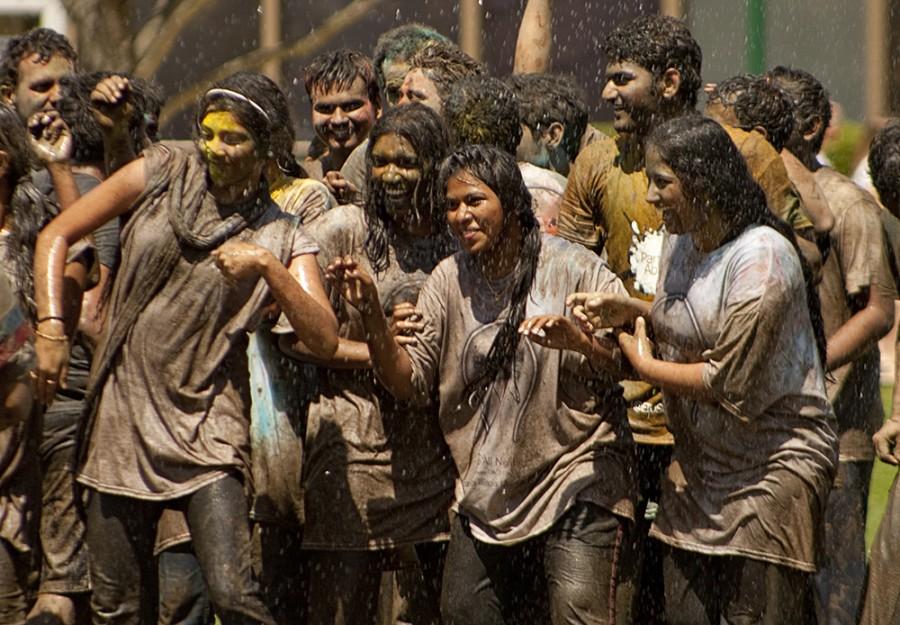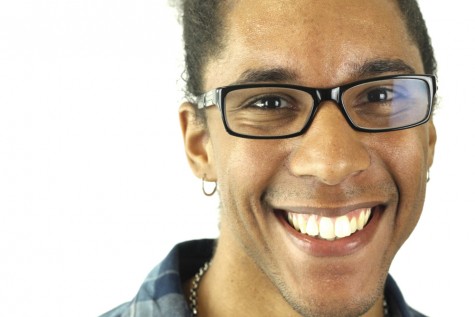International students compare Holi event
Eastern study abroad students dance in the mud during Holi festival in the Library Quad on April 25, 2015. The event, which lasted two hours conssted of participants throwing paint at each other and sliding the mud.
April 22, 2015
Students will be drenched in high doses of water while being covered in vibrantly colored powder for the third annual Holi: Festival of Colors at 2 p.m. Friday in the Library Quad.
Holi, a Hindu religious holiday most commonly celebrated in India and Nepal, is meant for individuals to free themselves of past stresses and angers — taking up a forgive-and-forget attitude.
With the holiday being celebrated worldwide and every year at Eastern, many international students recognize it as a day of happiness but celebrate it differently.
Mahip Rathore, a clinical psychology graduate student, said Holi is celebrated on a full moon according to the Hindu calendar marking the end of winter and beginning of spring.
“We put dry colors on each other and celebrate it like a carnival,” Rathore said.
Sneha Marupaka, a technology graduate student, said one of the differences when she celebrates the holiday in India is the different colors used to paint their clothes and skin is actually watercolors. She said each color represents some form of happiness and moving on from the past.
Marupaka said when she participates in the holiday the colors have stained her skin for about a week. She said some cultures wear white when celebrating the holiday and others just wear their regular clothes like the Gujarati.
“We used to wear old clothes because the clothes would be very dirty,” Marupaka said.
Holi is considered a holy day in many ways. The holiday is a celebration of ridding past angers and evils the night before with a bonfire called Holika, which is where Holi gets its name.
The ash from the bonfire is also sometimes worn on the forehead to ward off evil spirits, according to the Holi Festival website. The holiday in India also incorporates a drink called bhang, which is made out of cannabis leaves.
Marupaka said one of the biggest differences she has seen for Eastern’s Holi and the event in India is the small amount of colors. She said India’s way of celebration allows for many colors; last year, she was also one of the students who played in the mud during the event.
“Holi is a great thing for us; I really like that,” Marupaka said of the university celebration it annually.
Tejaswi Lingam, a graduate student in computer technology, said the holiday is also celebrated a little differently regionally in India. Like Marupaka, Lingam said they do use watercolors to celebrate.
Lingam said they also have the same color powder used for Eastern’s celebration, but they use it to mix with buckets of water and spray one another with water guns. She said some also conduct a prayer ritual called Puja to honor and pay respects to a god or spirit as well as lighting incense.
Rathore said one of the fun aspects about the holiday is using water balloons and water guns to apply color coating one another’s bodies in a variety of hues.
“This is an occasion on which we forget our differences, forgive our foes and repair ruptured relationships,” Rathore said.
Jayadev Kasaraneni, a graduate student in computer technology, said the event is fun and each color as Marupaka said represents happiness, but also many different emotions.
Kasaraneni and Lingam both said when they have celebrated the event, they wear their normal clothes instead of white because it gets expensive to buy and wash white clothes year after year for the holiday.
Neither Lingam nor Kasaraneni have participated in Eastern’s version of the holiday and both are eager to attend.
“We don’t want to miss Holi,” Lingam said.
Roberto Hodge can be reached at 581-2812 or rlhodge@eiu.edu.

















![[Thumbnail Edition] Senior Foward Macy McGlone, getsw the ball and gets the point during the first half of the game aginst Western Illinois University,, Eastern Illinois University Lost to Western Illinois University Thursday March 6 20205, 78-75 EIU lost making it the end of their season](https://www.dailyeasternnews.com/wp-content/uploads/2025/03/WBB_OVC_03_O-1-e1743361637111-1200x614.jpg)




















































